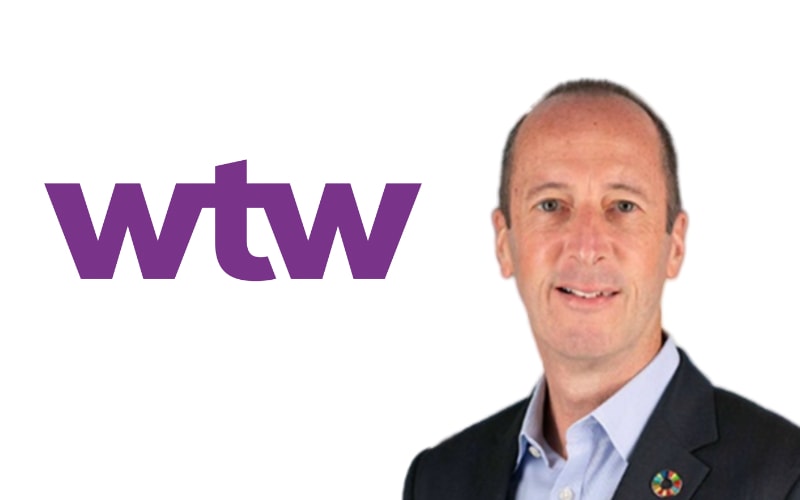The insurance industry needs to be cautious about how it positions itself to support the now operational Loss and Damage fund and not over promise on what it can deliver, Dr. Simon Young, Senior Director, Disaster Risk Finance & Parametrics at WTW, told Reinsurance News around the COP28 summit.
 On the opening day of this year’s COP event, it was announced that an agreement had been reached to operationalise the Loss and Damage fund, which aims to compensate the world’s poorest for the impacts of climate change, and support mitigation and recovery.
On the opening day of this year’s COP event, it was announced that an agreement had been reached to operationalise the Loss and Damage fund, which aims to compensate the world’s poorest for the impacts of climate change, and support mitigation and recovery.
For global insurance broker WTW, the fund is a key talking point at COP28 in Dubai, although, as explained by Young, discussions are very technical and process oriented, and somewhat peripheral to what the commercial insurance industry is interested in.
“I actually think that the industry as a whole needs to be very cautious about the way it positions itself to support the Loss and Damage fund. I think there’s some significant resistance to private insurance being a core part of the fund.
“What we would like to see is insurance tools and insurance mechanisms used but deployed in ways that did not influence the necessary flow of funding from polluting countries to the vulnerable countries after disasters,” said Young.
“We need as much of that unfiltered and without any haircuts taken off. And unfortunately, the insurance industry obviously has to take a haircut, and that can be quite significant in some of these situations,” he added.
Young explained that the amount of capital that the recipients from the Loss and Damage fund are aiming to be released is absolutely massive and warned of the risk of getting into a position where you’re trying to raise hundreds of millions of dollars of premium every year to get to tens of billions in capacity.
“I just don’t think that that’s realistic in the context. So, yes, there’s definitely an issue with over promising on what the private insurance industry can deliver in the Loss and Damage context, and whether it can deliver it with real value for money,” said Young.
While the exact role of the private insurance sector within the Loss and Damage fund is uncertain, Young emphasised that trigger based mechanisms should be an important part of the fund.
“Releasing funds after a disaster quickly and reliably is quite important, under some form of contractual obligation that actually gets carried out, rather than just being a promise.
“To release post-disaster funds quickly and fairly across 150 or so countries you need to have some rules around it, and with quantitative measurement of hazards, as we’ve demonstrated through parametric insurance mechanisms, that can be executed very effectively,” said Young.
“Pre-arranged and trigger-based finance isn’t a panacea and certainly shouldn’t be guiding the vast majority of funding, but I think there can be significant funding flows that could be triggered quicker, more reliably, more clearly through those mechanisms than not having them at all,” he continued.
Young also highlighted that while risk reduction within the Loss and Damage debate fits within the adaptation conversation, it needs to be brought more to the fore in terms of being the direct mechanism to ultimately reduce the needs of a Loss of Damage fund, which requires reducing the losses and damages.
“Obviously, part of that is going to be through mitigation, part of it through adaptation in the medium to long-term, but there’s a short-term need to really make a difference. And I think there’s still a disconnect between the amount of money that gets invested in risk reduction versus what might be thrown at the wall for trying to manage the aftermath,” said Young.
“So, trying to bring those two things, I think, more into alignment should be a significant part of the Loss and Damage fund. Otherwise, it’s going to be bottomless, there is no limit to how much funding will be needed, right.
“It’s one thing writing rules about how much you can get out of it, but ultimately, that number is still going to keep going up unless you address the underlying cause, and the hazard is going to continue to go up. So, we have to address the exposure and vulnerability and make sure that those are going the other way,” he continued.
“There are definitely areas where insurance has a strong footprint in the UNFCCC space. But there’s also areas where I think we need to be really cautious about overplaying our hand and differentiate between private insurance transactions and insurance tools and mechanisms that could be deployed in different ways to unlock different sources of capital, but still getting the advantages of discipline, objectivity, and certainty in funding flows.
“I think that those are very, very valuable. And so, what I don’t want to happen is that the Loss and Damage fund throws out the baby with the bathwater, in terms of we want nothing to do with insurance, and then you lose the good things that we could bring,” concluded Young.


